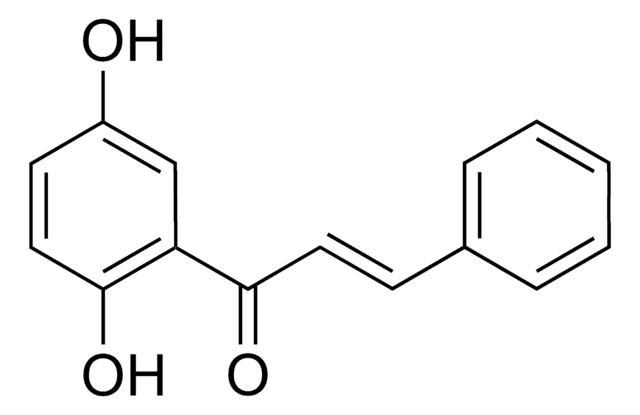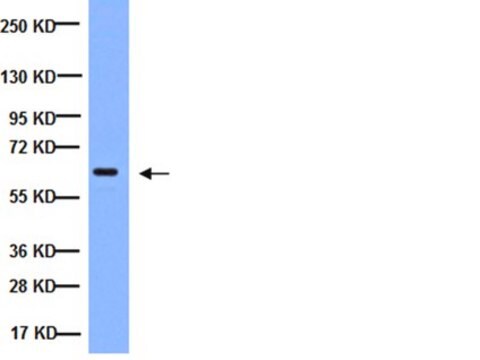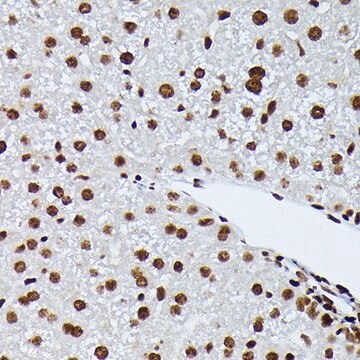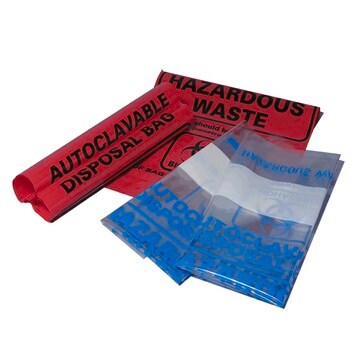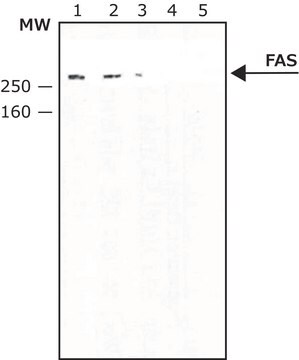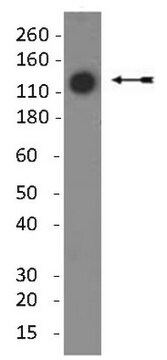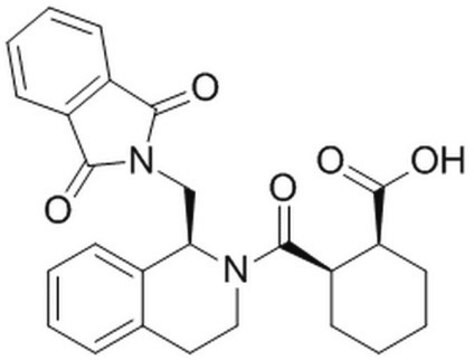MABE1799
Anti-Nrf2 Antibody, clone 103
clone 103, from rat
Synonim(y):
Nuclear factor erythroid 2-related factor 2, NF-E2-related factor 2, NFE2-related factor 2, Nuclear factor, erythroid derived 2, like 2
About This Item
Polecane produkty
pochodzenie biologiczne
rat
Poziom jakości
forma przeciwciała
purified immunoglobulin
rodzaj przeciwciała
primary antibodies
klon
103, monoclonal
reaktywność gatunkowa
rat, mouse
metody
immunohistochemistry: suitable
western blot: suitable
izotyp
IgG2bκ
numer dostępu NCBI
numer dostępu UniProt
Warunki transportu
ambient
docelowa modyfikacja potranslacyjna
unmodified
informacje o genach
mouse ... Nfe2L2(18024)
Opis ogólny
Specyficzność
Immunogen
Zastosowanie
Western Blotting Analysis: A representative lot detected Nrf2 in Western Blotting applications (Maruyama, A., et. al. (2008). Arch Biochem Biophys. 477(1):139-45; Kobayashi, E.H., et. al. (2016). Nat Commun. 7:11624; Taquchi, K., et. al. (2016). Toxicol Sci. 152(1):40-52; Saito, R., et. al. (2015). Mol Cell Biol. 36(2):271-84; Taquchi, K., et. al. (2014). Mol Cell Biol. 34(5):900-13).
Epigenetics & Nuclear Function
Jakość
Western Blotting Analysis: 0.5 µg/mL of this antibody detected Nrf2 in Keap1-KO MEF cell lysates versus Nrf2-KO MEF cell lysates.
Opis wartości docelowych
Postać fizyczna
Przechowywanie i stabilność
Inne uwagi
Oświadczenie o zrzeczeniu się odpowiedzialności
Nie możesz znaleźć właściwego produktu?
Wypróbuj nasz Narzędzie selektora produktów.
Kod klasy składowania
12 - Non Combustible Liquids
Klasa zagrożenia wodnego (WGK)
WGK 1
Certyfikaty analizy (CoA)
Poszukaj Certyfikaty analizy (CoA), wpisując numer partii/serii produktów. Numery serii i partii można znaleźć na etykiecie produktu po słowach „seria” lub „partia”.
Masz już ten produkt?
Dokumenty związane z niedawno zakupionymi produktami zostały zamieszczone w Bibliotece dokumentów.
Nasz zespół naukowców ma doświadczenie we wszystkich obszarach badań, w tym w naukach przyrodniczych, materiałoznawstwie, syntezie chemicznej, chromatografii, analityce i wielu innych dziedzinach.
Skontaktuj się z zespołem ds. pomocy technicznej
